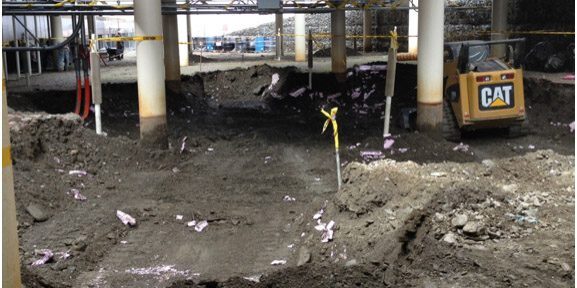A case between the federal government and the State of Alaska on the clean-up of contaminated Alaska Native lands was thrown out. On Monday, July 17th Federal District Court Judge Russel Holland dismissed the State of Alaska and the Alaska Department of Environmental Conservation (DEC)’s case against the United States for the Department of Interior (DOI)’s failure to clean up Alaska Native Claims Settlement Act (ANCSA) contaminated lands. The state filed a lawsuit against the federal government last year.
ANCSA was signed into law by President Nixon in 1971 to address claims by Native Americans regarding lands they rightfully owned being claimed by the United States. Alaska Natives were to receive over 10% of their land and a one time payment of just under $1B, leading to the establishment of Native corporations.
In the early 1990’s, Congress recognized that Alaska Natives received contaminated lands. Congress prepared a clean up plan for every contaminated site with express timelines to follow. DOI was instructed to report on ANCSA lands that were discovered to be contaminated. In 1995, DOI was directed to report on the extent of hazardous contamination on ANCSA lands. The report was sent to congress in 1998, acknowledging the unjustness of conveying contaminated lands in the settlement of aboriginal rights.
In 2014, Congress requested DOI to report a comprehensive inventory, an update on the hazardous contaminants requested from 1995, and a detailed plan on how the Department intends to complete cleanup of each contaminated site. In 2016, the Bureau of Land Management (BLM) provided an update regarding the report which was incomprehensive. The inventory was updated in 2019, indicating there were 1,179 contaminated sites conveyed to an ANCSA corporation.
Last year, the State filed a complaint to force the Federal government to take responsibility for the nearly 1200 sites that it conveyed. Despite the inaction, DEC is still working to continue advancing the cleanup of these sites. On Monday, Judge Holland determined the State had not demonstrated that it was directly injured by the federal government’s actions, or inaction. The motion to dismiss suggests that DOI wasn’t required by Congress to take action, only to draw up reports and a remediation plan.
Alaska Governor Mike Dunleavy, DEC Commissioner Jason Brune, and Attorney General Treg Taylor said in a press statement on Monday, July 17th,
“The dismissal of this case is a maddening excuse for the federal government to continue circumventing its responsibility. Instead of looking for loopholes, DOI should focus on the need for action and justice for Alaska Natives and ANCSA contaminated lands; the State of Alaska will continue to do just that.”
Governor Mike Dunleavy
“Interior Secretary Haaland’s double standard ensures that Alaska Natives’ contaminated lands will remain contaminated. While the State of Alaska recognizes that responsible parties should clean up their messes, it’s noted that the Department of Justice, Bureau of Land Management, and DOI don’t hold themselves to that same standard. Apparently, the Biden administration and Secretary Haaland’s focus on addressing longstanding environmental justice for indigenous peoples extends to everywhere in the United States except for Alaska.”
DEC Commissioner Jason Brune
“The Department of Law is evaluating the order closely for purposes of appeal. The State pursued a class-action style Administrative Procedure Act (APA) claim over a site-by-site effort to provide the court with a practical and efficient avenue to address all sites at once and to give Alaskans a remedy to a languishing problem on Native lands. The extensive contamination on many sites transferred under ANCSA certainly lends to other legal avenues for relief, and Alaska will continue to pursue justice on behalf of Alaska Natives.”
Attorney General Tregg Taylor
The dismissal of the DEC’s case against the DOI comes as a disappointment to the people and lands of Alaska.
Photo at top: Removing contaminated soil below the Norton Sound Regional Hospital tank area. Photo by NSRH.




